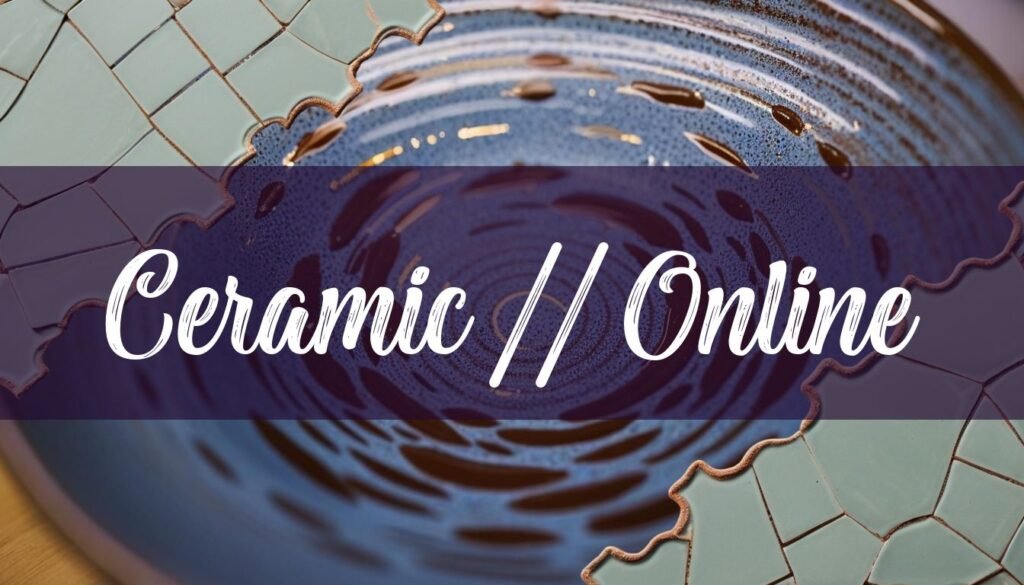Buying ceramic clay online offers convenience and a wide selection, but it’s essential to navigate the process with a bit of knowledge to ensure you get the right clay for your projects. From understanding the different types of clay to evaluating online listings and considering shipping costs, this guide will help you make informed decisions when purchasing ceramic clay online.
Understanding the Types of Ceramic Clay
The world of ceramic clay is vast and varied, with each type possessing unique characteristics that make it suitable for different purposes. The predominant types of pottery clay are earthenware, stoneware, and porcelain, but a mix of other clays to make them easier to handle may be preferable. Earthenware clay, often used by beginner potters because it is more forgiving, is porous when fired at high temperatures, making it ideal for pots used for growth, dinnerware, decorative plates, ornamental objects, and ceramic jewelry dishes. Basic earthenware, often called terracotta, absorbs liquids such as water, and is glazed or unglazed non-vitreous pottery that has normally been fired below 1,200 °C (2,190 °F). Its low firing temperature, porous nature, and soft texture make it easy to work with, widely available, and affordable, though it is fragile after firing and not waterproof without glaze.
Stoneware clay, known for its durability and versatility, appears white or grey when water is added and has high plasticity. Stoneware clays contain mineral impurities such as silica, feldspar, ball clay, and quartz, and do not have the same porosity as earthenware clays, making them perfectly suited to making pottery for holding liquids and foodstuffs. Stoneware refers to any clay that is fired at a temperature range between 1000°C and 1380°C, turning stone-like and durable when fired. It can be used for bakeware and cookware, tiles and flooring, or even unique items such as Sake sets and drinkware or pet bowls. For more on this topic, read how to make stoneware.
Porcelain clay, sometimes known as kaolin, is typically white and lends itself to bright white pottery pieces. It is almost purely made up of kaolin clay, with occassional amounts of quartz and feldspar when manufactured, and can withstand extremely high temperatures. The structure of this clay allows it to withstand the high temperatures in a kiln and when fired it becomes non-porous and very hard, commonly used to make dinnerware and also some decorative pieces. It is a versatile material used for creating a wide range of artistic and functional objects, and can be difficult to work with, requiring a lot of water due to its large number of clay particles.
Factors to Consider When Choosing Clay
Choosing the right ceramic clay is a critical decision that influences the entire creative process. The ideal clay body for your needs is dependent on various variables such as temperature range, the type of product you want to make, and the color. Each type of clay has different properties, benefits, and shortcomings, so it is important to understand the requirements of your pottery work and the available types of clay bodies. You need to look into the end product, expertise needed and the costs incurred. The shrinkage percentages go anywhere from 5% to 15% depending on the kind of clay. These temperatures and the time the pieces need to be fired vary depending on both the type of clay and the size or thickness of the piece.
Grog is clay that has previously been fired and then crushed, added to clay to give it a different texture and reduce the shrinkage of the piece. For beginners, earthenware provides a forgiving and enjoyable starting point. Stoneware offers a balance of durability and workability, while porcelain challenges experienced potters to achieve intricate results. Stoneware is an excellent choice for creating durable, usable items, earthenware allows for vibrant glazes and sculptural freedom, and porcelain is preferred for delicate and intricate artworks. When choosing a clay, you also need to know what type of kiln you have access to and it’s temperature limits. Each clay has a specific temperature range specifications. You may find that you want to use more than one clay body if you use a variety of construction methods such as potter’s wheel or hand building. If you are sourcing your own clay, read this article on a potter’s guide to local clay sourcing.
Top Brands and Suppliers and Price Range
When it comes to purchasing ceramic clay, quality and consistency are key. Amaco is a great company with outstanding customer service, and many potters like the consistency in their clay. Standard Clay Company also offers a wide range of clays, from low fire to high fire, including wood fire bodies, porcelains, and stonewares. Other reputable brands include Laguna Clay, Rocky Mountain Clay, and Tuckers Pottery. The price of ceramic clay can vary depending on the type, quantity, and supplier. For example, at Ceramics Supply Pittsburgh, a 50lb box of “The Clay Lady’s Clay” starts at $42.00, while a 50lb box of “Grolleg Porcelain” can cost upwards of $103.00.
Standard Clay 508 Woodfire Stoneware costs $1.34, while Standard Clay Troy Porcelain 437 costs $3.00. Sheffield Pottery offers a 50lb box of T6B Stoneware Moist Clay for $64.00 delivered, or $41.25 for non-delivered. Many suppliers offer quantity discounts, so it’s worth considering buying in bulk if you use a lot of clay.
Essential Tools and Equipment
To fully engage with ceramic clay, it’s essential to have the right tools and equipment. A pottery wheel is necessary if you are interested in the throwing method of production. Bladed tools are used in art of all kinds, and, believe it or not, they play an essential role in pottery, great for sculpting, molding, carving, adding intricate details, and smoothing your clay. Aprons are a potter’s best friend, especially if they want to protect their clothing from potential damage. A chamois is a thick cloth or leathery material used to smooth and compress the edges of thrown ware. Potter’s needles are slender steel tools with needle-like heads and, occasionally, handles, and can execute various functions when crafting clay creations, from sculpting and creating intricate details to parting projects on the wheel and removing clay carefully.
Another essential tool for your pottery arsenal is a wire clay cutter or cut-off wires, to help you work with your clay. A fettling knife looks like a regular knife, except it boasts a flexible blade that tapers to a point, and is a wonderful multi-use instrument for potters. Ribs are great for smoothing and finishing clay on the wheel, while scrapers are used to remove clay instead of shaping and smoothing it like ribs. Sponges are an effective tool in that they’re multi-purpose, making them an invaluable addition to your pottery toolkit. A pottery brush is another tool that boasts a variety of uses, especially concerning the decoration of your clay creations. Pottery calipers essentially perform the same function, measuring the inner and outer dimensions of your clay creations, precisely where they’ll join with other parts of a set. A bevelled edge is a potter’s best friend, which can make joining your slab seams much stronger.





